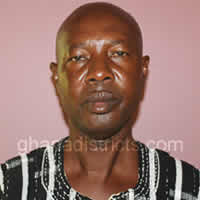Introduction
The overall development of a country is based on the production of goods and services. Critical to the production process is the human capital of the country. Although all persons irrespective of age and sex consume goods and services produced, only a section of the total population produces them. This is the working population often referred to as the “employed’. The type of economic activity pursued is influenced by the nature of the economy and level of socio-economic development (Hull, 2009).
Generally, the larger the employed population, the more wealth is created leading to the general well-being of the population. Over the years, a number of job opportunities have been created in the public and private sectors in a wide range of economic activities. Contributing to employment opportunities in a country or area are factors such as the structure of the population, proportion of the economically active population and the labour market. A detailed study of the dynamics of the population and the labour market helps to identify the employment opportunities available and the structure of the economy.
Data on economic characteristics provide a profile of the population and how persons enumerated are economically engaged and the sectors of the economy in which they are engaged. These data are needed for computing economic indicators and determining the level of economic development of the country. The data are also needed for planning, monitoring and for assessing the impact of various economic and social intervention programmes. This chapter examines activity status, occupation, industry, employment status and employment sector.
Economic Activity Status
Tables 4.1 show the economic activity status of persons aged 15 years and older and sex in the district. About seven out of ten persons are economically active (72.4%). About five out of ten persons (45.8%) who are unemployed are seeking work for the first time and available to be employed. Similarly, 35.3 percent, that is about three out of ten, of those who are economically not active are in full time education and 28.3 percent do home duties
Table 4.1 shows that the proportion of males seeking jobs for the first time is higher (56.8%) than that of the females (39.4%).
With regards to the economically not active category, 35.3 percent of the total population (21,671) is into full time education, 28.3 percent of total population does household chores whiles 23.7 percent are too old to work. As expected, a relatively high proportion of females (35.2) who are economically not active do house hold chores.
Figure 4.1 portrays the economic activity status by sex of population aged 15 years and older. It shows that the proportion of males who are economically active is higher (79.6%) than the proportion of the female (65.7%) in the same category. In addition, the proportion of females who are economically not active is higher (34.3%) than that of the males (20.2%) (Figure 4.1).
Economic activity and age
Table 4.2 depicts the population aged 15 years and older by sex, age and activity status. The Table shows that the proportion of those who are employed is higher (69.8%) than those who are unemployed (2.7%). The table further shows that 78.9 percent of the employed are aged 25-29 years while 4.7 percent of the unemployed are in the 20-24 years age group. About one third (51.1%) of the 15-19 age cohort is economically not active.
A higher proportion of females (58.6%) than females (44.0%) aged 15-19 years are economically not active because they are likely to be either students or apprentices.
Occupation
Occupation refers to the type of work a person is engaged in at an establishment where the person works. Table 4.3, depicts employed population aged 15 years and older by occupation and sex. From Table 4.3 about eight out of ten persons (81%) aged 15 years and older are engaged as skilled agricultural, forestry and fishery workers, followed by craft and related workers (7.0%) and service and sales workers (6.5%). A higher proportion of the males (90.7%) than the females (70.0%) are skilled agricultural, forestry and fishery workers.
Date Created : 11/20/2017 4:23:20 AM




